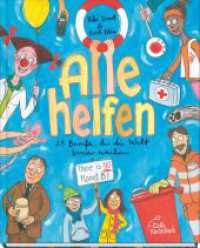Full Description
This book helps to recognize the rights of refugees and provides a framework to identify and approach health needs, from basic elements like service mapping and initial interventions to more complex elements of ongoing healthcare and support and broader topics such as migration public health, migration policy and health systems. Beyond biomedical frameworks, it draws on socio-ecological models to inform assessments and integrated models of care to improve health and health equity. Set out in three comprehensive sections: public health theory (Part 1), applied public health (Part 2), and clinical approaches (Part 3), this book draws on multiple disciplines and insights from humanitarians, academics, policy experts, and clinicians from diverse contexts, with expertise in forced migration, to create an accessible reference tool to inform healthcare professionals' interactions with forcibly displaced individuals and populations in all contexts for both high and low resource countries. Apart from providing information across the spectrum of health issues, clinical specialties and global contexts, it discusses associated areas, including human rights and law, public health, medical anthropology and cultural awareness.
Key Features:
Bridges the gap between existing academic literature on refugee health and guidelines for health management in humanitarian emergencies
Helps to develop an integrated approach to healthcare provision, allowing healthcare professionals and humanitarians to adapt their specialist knowledge for use in forced migration contexts and with refugees.
Recognizes the complex and interconnected needs in displacement scenarios and identifies holistic and systems-based approaches.
Covers public health theory, applied public health and clinical aspects of forced migration.
Contents
Table of Contents
PART ONE: PUBLIC HEALTH THEORY
Introduction
1. The global reality: forced migration and health
1.1 Introduction to migration and global health
1.2 Forced migration and global health governance
1.3 Why are people forced to displace and seek refuge?
2. International standards, humanitarian principles and forced migration
2.1 Refugee health policy, international standards and humanitarian principles
2.2 The right to health for forced migrants
3. Refugee health needs and response
3.1 Health needs of refugees and internally displaced persons in camp settings
3.2 Health cluster coordination mechanism
3.3 The needs of migrants in transit
3.4 Lived experiences of refugees and accessing services in a host country
3.5 Cultural competency and cultural adjustment of services
PART 2: APPLIED PUBLIC HEALTH
Introduction
4. Health needs assessments in the context of forced displacement
5. Mainstreaming refugee health
5.1 Providing healthcare in protracted refugee situations: a health system-strengthening approach
5.2 Health policy and advocacy to improve the health of forced migrants
5.3 Considerations in the initial healthcare assessment for new arrivals
5.4 Facilitating access to healthcare
6. Safeguarding and supporting vulnerable groups
Introduction
6.1 Protecting and supporting children on the move
6.2 Sexual and reproductive health, maternity and newborns
6.3 Gender-based violence and migration
6.4 Trafficking
6.5 Disability
6.6 Older people
6.7 Detention
7. The humanitarian practitioner
7.1 The professional humanitarian practitioner
7.2 Personal ethics in humanitarian practice
7.3 Resilience and mental health
7.4 Ongoing education and maintaining competencies
7.5 Managing team dynamics and effective communication
7.6 Accountability and sustainability
PART 3: CLINICAL CHAPTERS
Introduction
8. Emergency Scenarios
8.1 An approach to medical emergencies in forced displacement settings
8.2 Triage
8.3 Specific Emergency Conditions in Forced Displacement Settings
9. Communicable diseases
9.1 Communicable diseases
9.2 Surveillance systems
9.3 Sepsis
9.4 Respiratory infections
9.5 Gastrointestinal infections
9.6 Urinary tract infections, genital ulcers and syphilis
9.7 Central nervous system infections
9.8 HIV and its complications and needlestick injuries
9.9 Tropical, subtropical and vaccine preventable infections, including malaria
9.10 Skin, soft tissue and bone infections
10. Mental health and psychosocial support
10.1 Mental health and psychosocial support
10.2 Mental health: clinical issues
10.3 Culture and context in refugee mental health
10.4 Support for humanitarian workers
11. Non-communicable diseases
11.1 Non-communicable diseases
11.2 Cardiovascular diseases
11.3 Endocrine diseases
11.4 Gastrointestinal diseases
11.5 Nephrology
11.6 Neurological diseases
11.7 Respiratory diseases
11.8 Oncology
12. Palliative care
13. Paediatrics
13.1 General assessment of children and young people
13.2 Management of the sick child
13.3 Neonatal care
13.4 Management of common illness
13.5 The child with a fever or a rash
13.6 Specific infections in children
14. Sexual and reproductive health
14.1 Sexual and reproductive health in forced migration
14.2 Identification, management and prevention of sexually transmitted infections
14.3 Gynaecology, fertility and family planning
14.4 Pregnancy, delivery and postpartum
14.5 Sexual and gender-based violence
15. Care of survivors of torture, gender-based violence and trafficking








